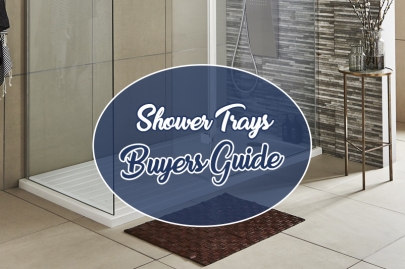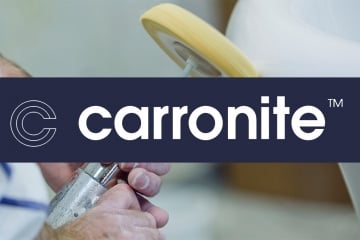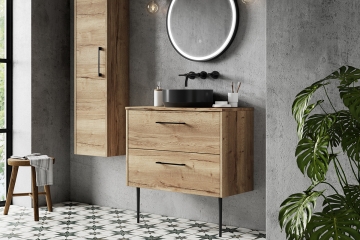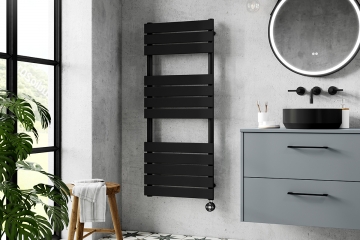Shower Trays Buyers Guide

Shower Trays Buyers Guide
Choosing a new shower tray can be a difficult process, with a wide range of sizes, shapes, styles and finishes available. While it can be time consuming to sort through the huge selection, this does mean that you'll be able to find the ideal tray for your bath or shower room, once you know what you're looking for. By reading this shower trays buyers guide, we hope you'll be able to filter out some of the less suitable trays and make it easier to find one that's perfect for your home.
Shower Tray Sizes
One of the first things to consider is when purchasing a new shower tray is how it'll combine with your existing shower area. If you're buying a new shower enclosure at the same time as your tray, you're free to choose whichever pair you like to create an entirely new shower area. If you're only replacing your tray and would prefer to keep the rest of your enclosure, you will be limited by the size of your shower screen. Ensuring your screen is a perfect fit for your tray is vital, as it'll help your enclosure stay watertight.
If you're replacing an existing shower tray, you can confidently purchase a tray of the same dimensions and install it with the minimum amount of disruption. If you do decide to change the size or install an entirely new shower enclosure, it's important to be conscious of how much space you have to work with. This includes checking how your enclosure doors will open; a sliding door will occupy no extra space but a hinged one might need a clear space to open into. When choosing your tray and screen, it's worth remembering that you'll need to combine these measurements to find the height of your new unit. You don't want to buy a screen that's a perfect fit for your room, only to find that there isn't enough room for a tray beneath it.
Shower Tray Shapes
Square Trays
Square trays are the most versatile choice, suitable for installing in the majority of rooms and a good fit for a number of different door styles. These include folding doors, making them a great option for small bathrooms. Their shape means they can be positioned in a corner or, if you purchase a full enclosure, anywhere else in the room.
Rectangular Trays
The most popular choice in larger bathrooms, rectangular trays offer the most spacious interior and plenty of room to add helpful personal touches such as grab rails. Their two longer sides allow plenty of room for sliding doors, making them a space-efficient solution in their own right. Rectangular trays tend to be the most visually impressive, giving you space for the largest enclosures.
Quadrant Trays
Quadrant trays feature a curved front and a right angle at the back, ensuring they'll fit perfectly into any corner of your room. The curved front allows for a hinged or sliding door making them a versatile choice that will fit into the majority of spaces. For a more spacious option, an offset quadrant tray has one longer and one shorter edge, making it a roomier alternative to standard quadrants.
Other Shapes
There are several other shapes available, for example P and D shaped, as well as more uncommon types such as pentagonal trays, which occupies an area similar to a quadrant tray. These trays will restrict your selection of screens, so it might be best to purchase the tray and screen as a package and obtain an entire enclosure with a single purchase.
Shower Tray Materials
Acrylic Capped Stone Resin
Increasingly the most popular material for modern shower trays, offering the best balance between weight and durability. Stone resin trays are made with shards of stone that are coated in a layer of molded resin, which is then polished into a smooth finish. The acrylic cap protects the tray's stone core, increasing its durability and resistance to cracks and scratches. As an added benefit, they stay at room temperature, compared to colder ceramic trays. Stone resin is one of the more expensive materials for trays, though its longevity makes it an investment that will last.
Ceramic/Fireclay
A material often used in the manufacture of large items in areas such as public restrooms. Ceramic shower trays are some of the highest quality available but their weight can make them an impractical choice for residential use. Instead, they are more popular in properties where they will see frequent use, such as sports centre showers.
Acrylic
Constructed using the the same material as many modern bathtubs, acrylic shower trays are lightweight and often reinforced with wood. These trays are more flexible than others but this does mean they aren't quite as durable as stone resin or ceramic trays and are more susceptible to cracks and breaks.
Finding the Right Fit
Finding the perfect fit for your home is the trickiest part of choosing a shower tray but there are a few easy tricks that can help you. When you know the area you have to work with and the trays that will fit it, you can spend more time focusing on how your shower area will look instead of how much room you have. Don't forget to be conscious of your waste location; the size of your tray isn't your only concern when choosing which design to install. Make sure that you have the space to properly connect your pipes to your tray.
Home Planning Software
There are a number of programs for your PC or Mac that allow you to create a 2D or 3D model of your home. These vary in how user-friendly they are but the best ones make it simple to create a digital map of your bathroom and place whichever size and shape of shower tray you like. This is a quick and easy way to see whether you can install your tray and still have enough room to open your doors and maneuver around the room. There are several paid and free programs that will enable you to do this, such as Sweet Home 3D.
Using a Cut-Out
At the opposite end of the technology spectrum to computer software but every bit as effective. If you want to check that the base of a tray will fit into an area, simply mark the dimensions onto a large piece of paper or cardboard and cut it out. You can then place this into the desired area of your bathroom. While this isn't perfect and doesn't account for features such as doors, it's still a quick and cost-effective way of checking that a tray will fit your room. This is especially helpful with more unusual shapes, such as P and D shaped trays.
Riser Kits
The design of many modern shower trays places an emphasis on a low profile. While this may be desirable and blend into your bathroom more seamlessly, low trays can leave you without the space to install necessary plumbing. For situations where it isn't possible to place piping beneath your floor, a shower tray riser kit has adjustable legs that raise the height of your tray. A clip on cover then conceals these legs and any plumbing, leaving your tray with the same stylish appearance the designers intended.
Related Posts
The patented, triple-layer Carronite reinforcement system has been a staple in the bath industry for 40 years. We dig into the truth behind the strapline...
Choosing between floor-standing and wall-mounted vanity units should be straightforward, but it's actually one of those decisions where both options have genuine advantages and some proper drawbacks that aren't immediately obvious until you've lived with them.
When you're replacing radiators or planning a heating system, the sheer number of options can be a bit baffling. Panel, convector, column, designer - what's the actual difference, and does it matter?




